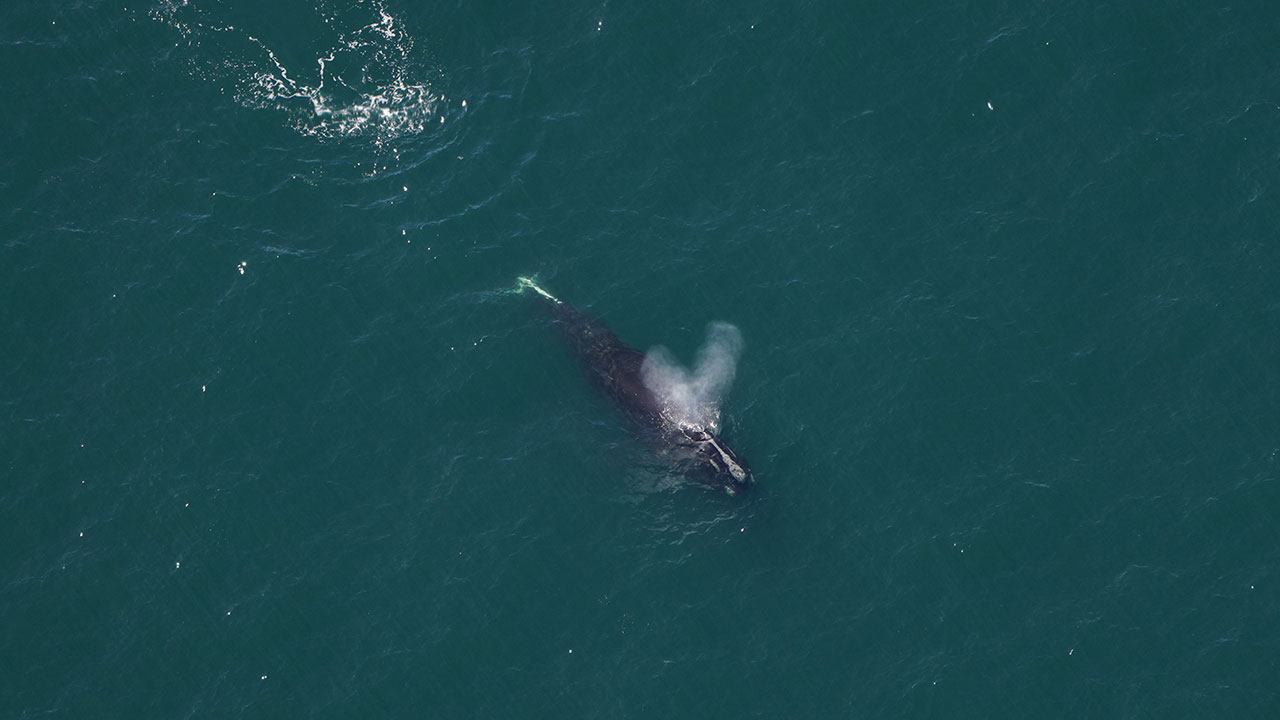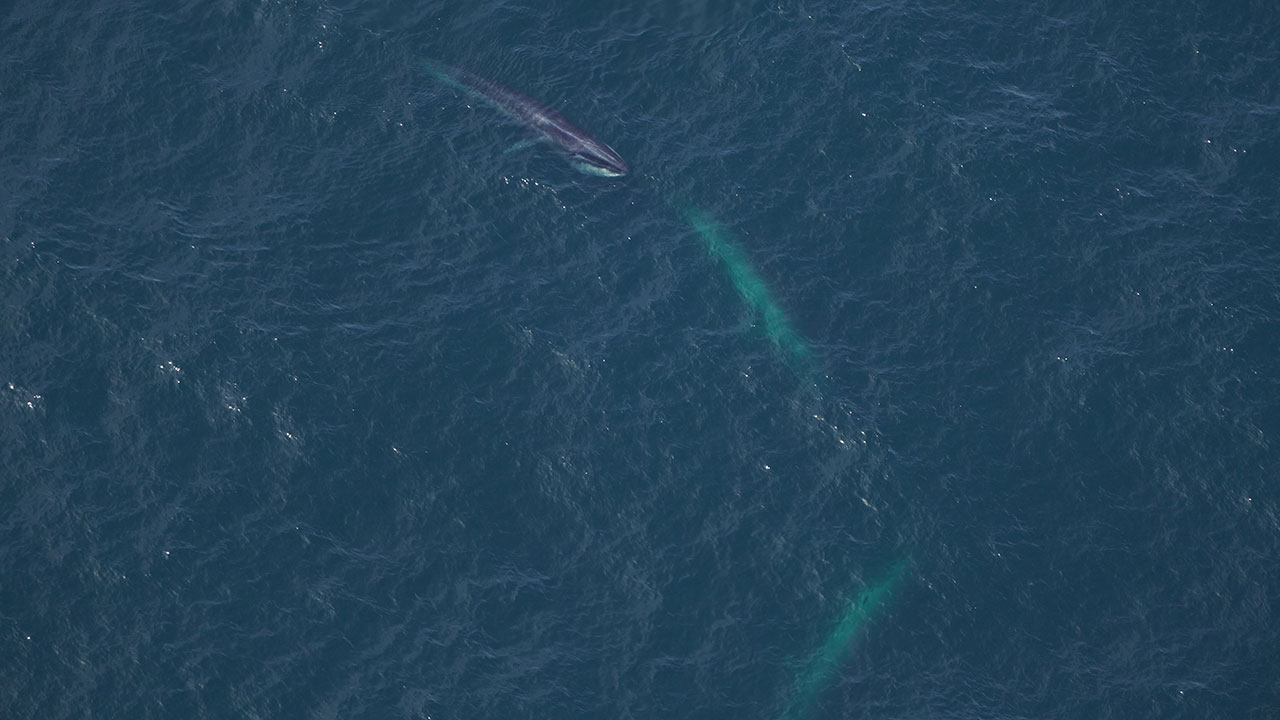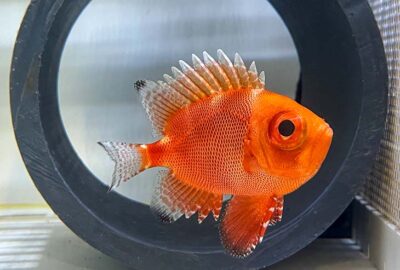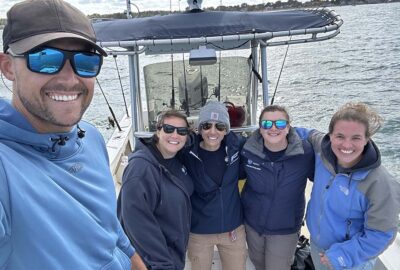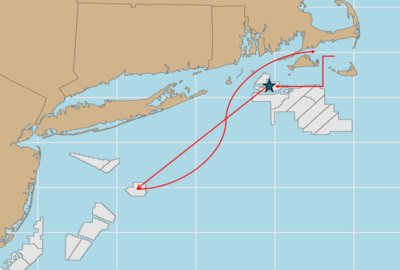Highlights from our Spring Aerial Survey Season
By New England Aquarium on Wednesday, August 07, 2024

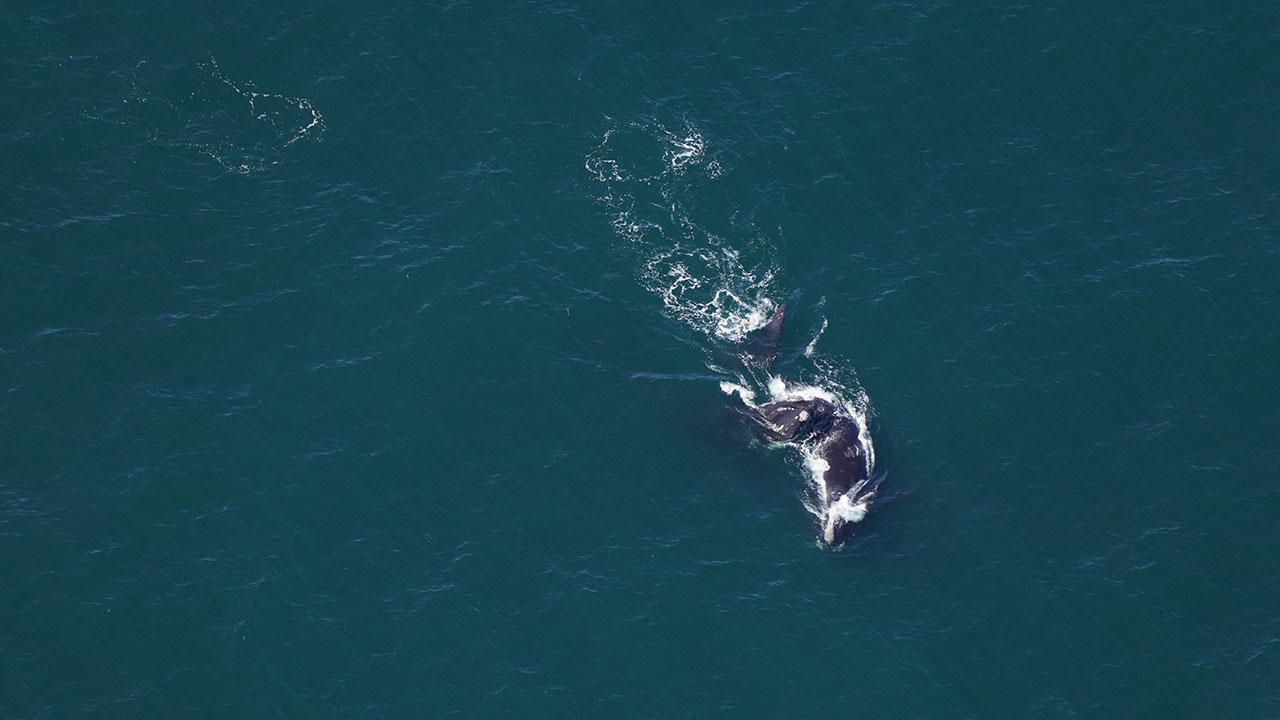
The aerial survey team at the Aquarium’s Anderson Cabot Center for Ocean Life cataloged a dynamic range of marine life in the waters of southern New England and the Gulf of Maine this spring. Our team of scientists—Orla O’Brien, Sharon Hsu, Kate Laemmle, Patrice Hostetter, and Katherine McKenna—spotted numerous whale species in New England waters, including the critically endangered North Atlantic right whale. They also saw sei, humpback, minke, and fin whales as well as basking sharks and dolphins. Here, we share a few of our favorite photos from the season.
/
White-beaked Dolphins
In March, while surveying waters in the Gulf of Maine, our team observed an exciting species seen infrequently on our surveys—white-beaked dolphins—notable for their distinct white beaks and penchant for inhabiting the colder waters around Newfoundland, Iceland, and Scandinavia, with New England comprising the southern-most portion of their range. These lively animals are rarely seen in the warmer waters of the Gulf of Maine.
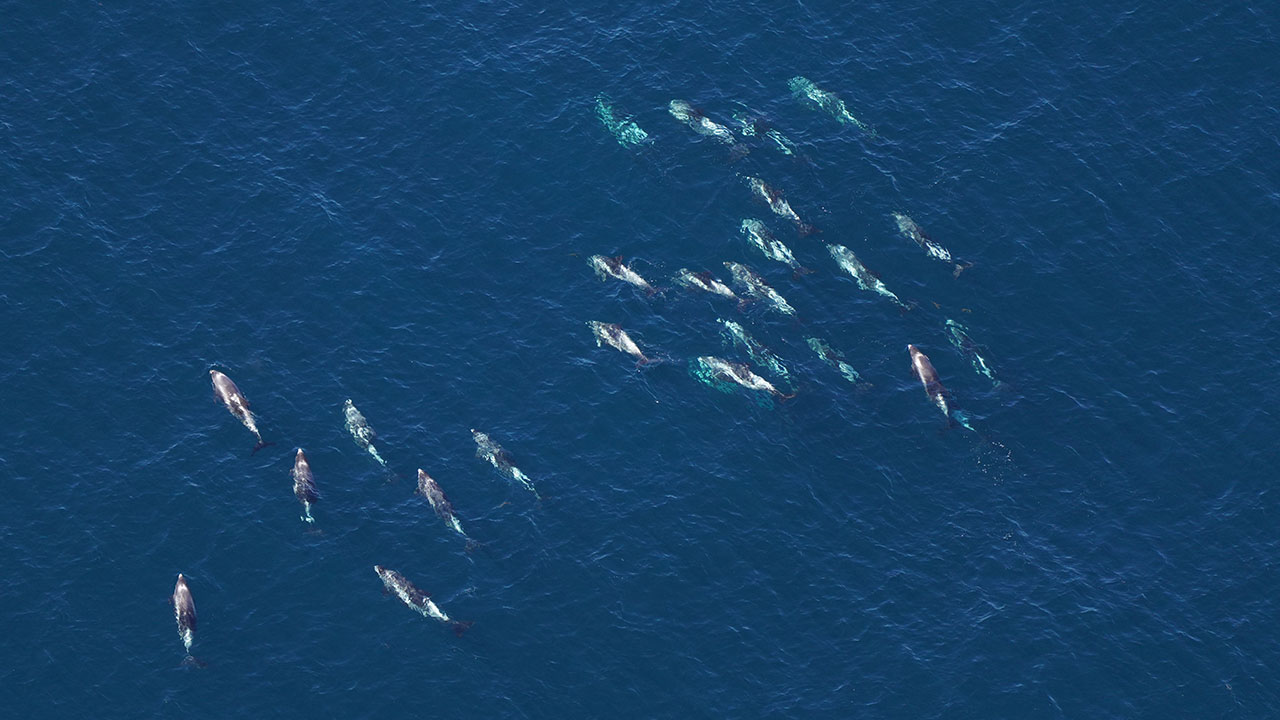
North Atlantic Right Whales
In March, the team documented 15 right whales feeding south of Nantucket– one of the largest aggregations observed this year. The team often sees right whales during the winter and early spring but this year they were spotted through the end of spring. In May, the team spotted three North Atlantic right whales feeding in and near the shipping lanes south of Martha’s Vineyard and Nantucket. The trio included two females—42-year-old Magic (Catalog #1243), who has given birth to seven calves, and Catalog #4093, thought to be least 14 years old and who has yet to give birth—and male Wavy Gravy (Catalog #1627), who is at least 39 years old.
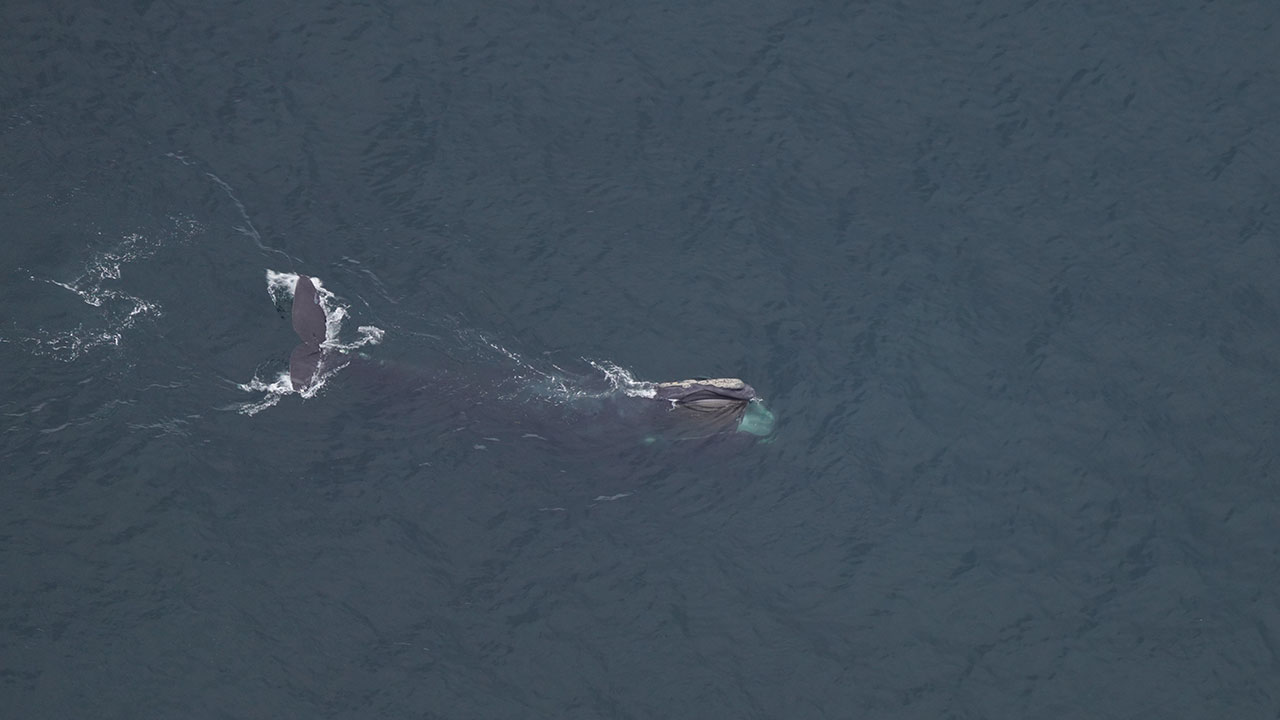
Sei Whales
On this same May flight, they detected a group of 25 sei whales, many of them feeding in the vicinity of the right whales (in or near the shipping lanes south of Martha’s Vineyard and Nantucket). Sei whales are most often seen in New England waters in the spring and are very adaptive feeders. They can skim feed plankton near the surface or just as easily lunge feed to catch small fish and krill.
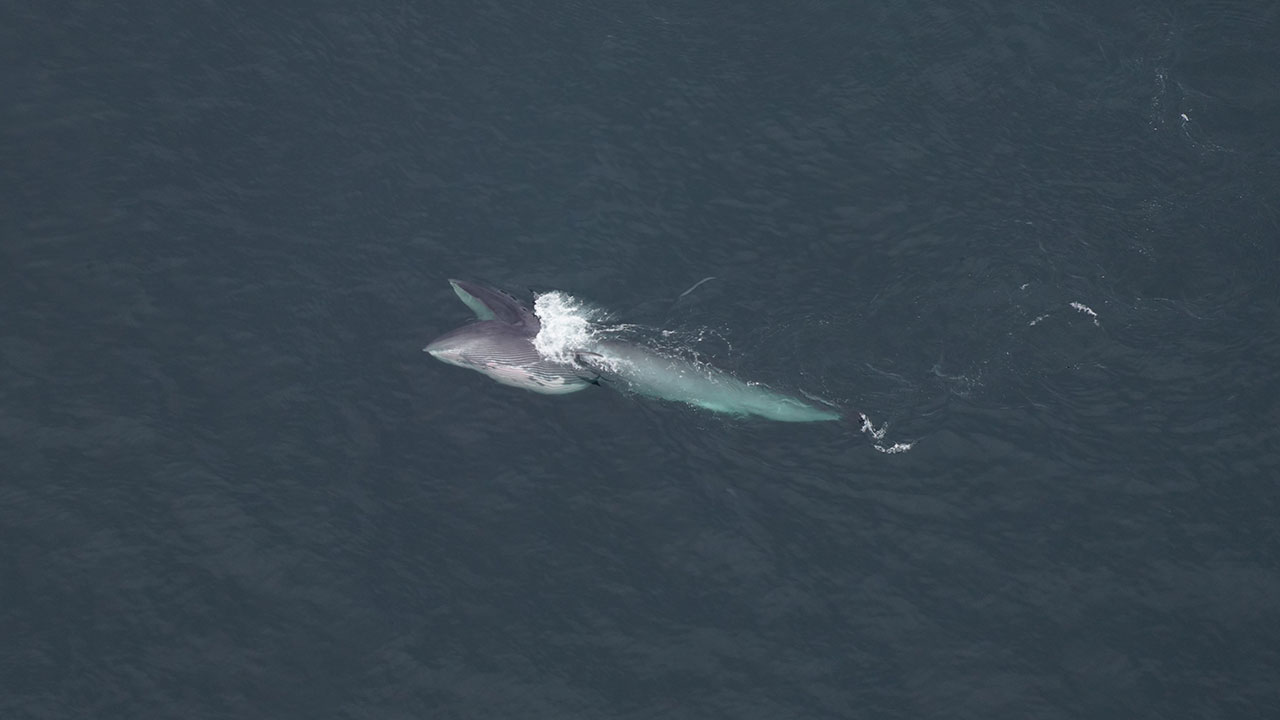
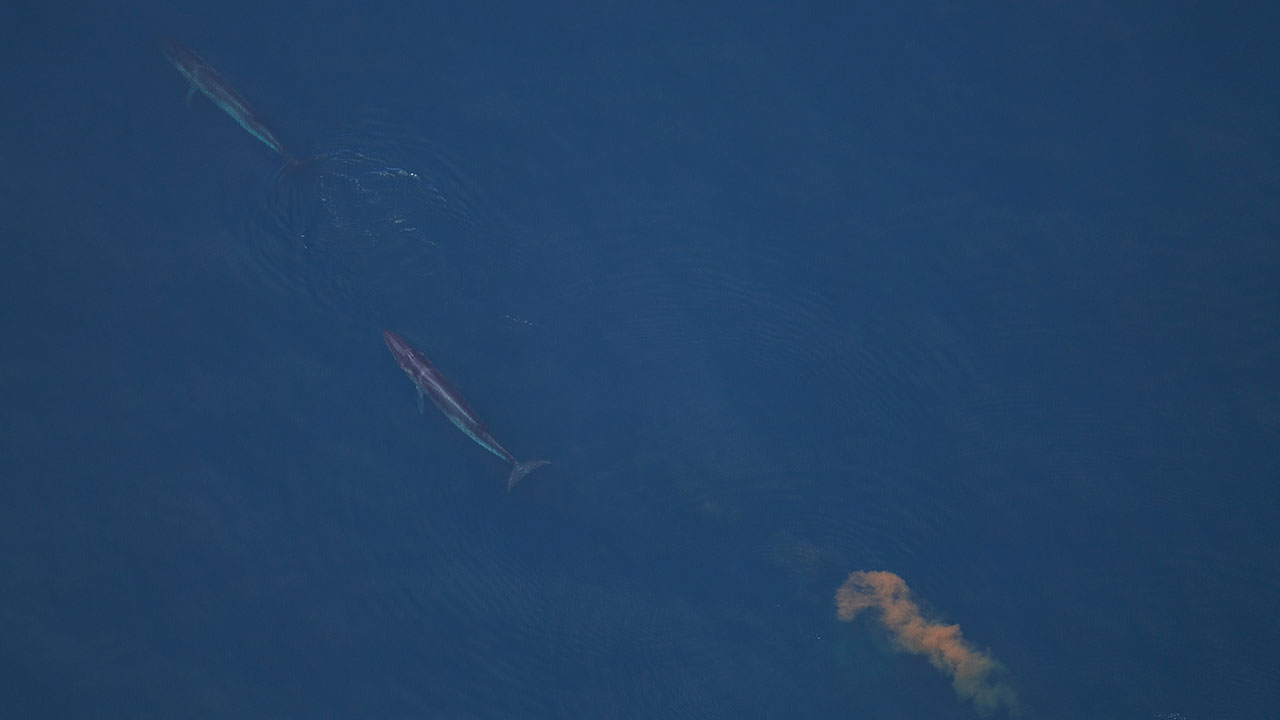
Humpback Whales
Humpback whales are also creative feeders and employ a technique called bubble feeding that allows them to corral their prey (small fish) by exhaling a circular net of bubbles around them. The humpbacks then swim up through the bubbles and consume their prey. The team was also thrilled to see the first mother and calf humpback sighting of the year.
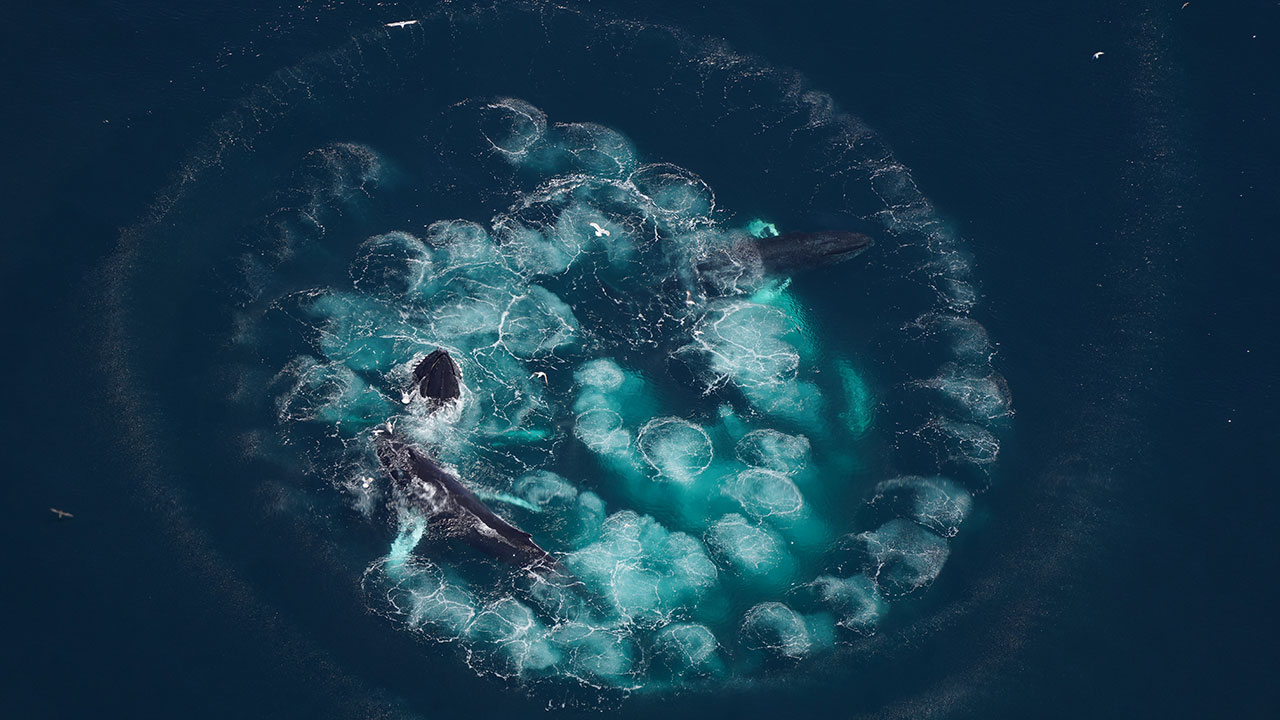
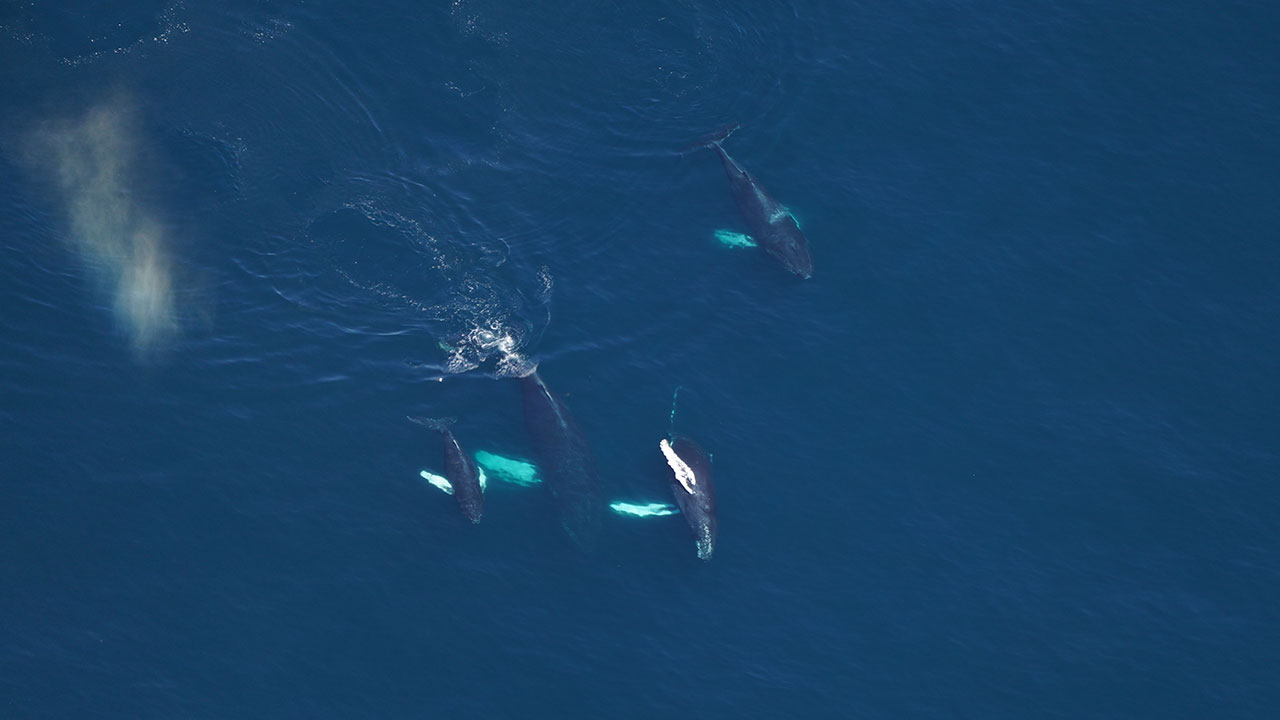
Basking Sharks
Another highlight of the season included spotting over 180 basking sharks on a single survey! Basking sharks—which appear in southern New England waters in late spring—are the second largest fish species (after the whale shark), have giant open mouths, and might appear menacing but are harmless. They use their large open mouths to filter feed on tiny planktonic prey.
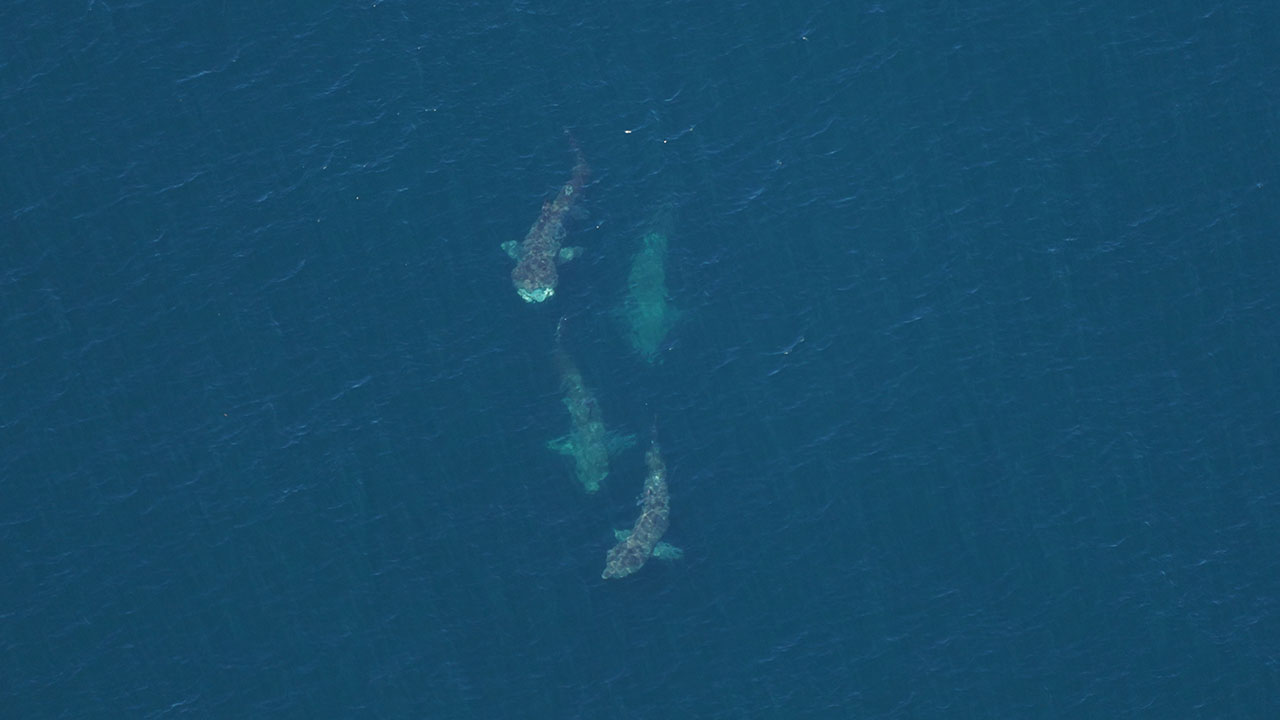
Our aerial survey team has conducted systematic aerial surveys in southern New England since 2011. The data collected from these surveys helps monitor changes in marine populations, animal health, and trends in occurrence and habitat usage.
Photos: All photos taken by New England Aquarium Aerial Observers. Right whale photos taken under NMFS permit #25739

